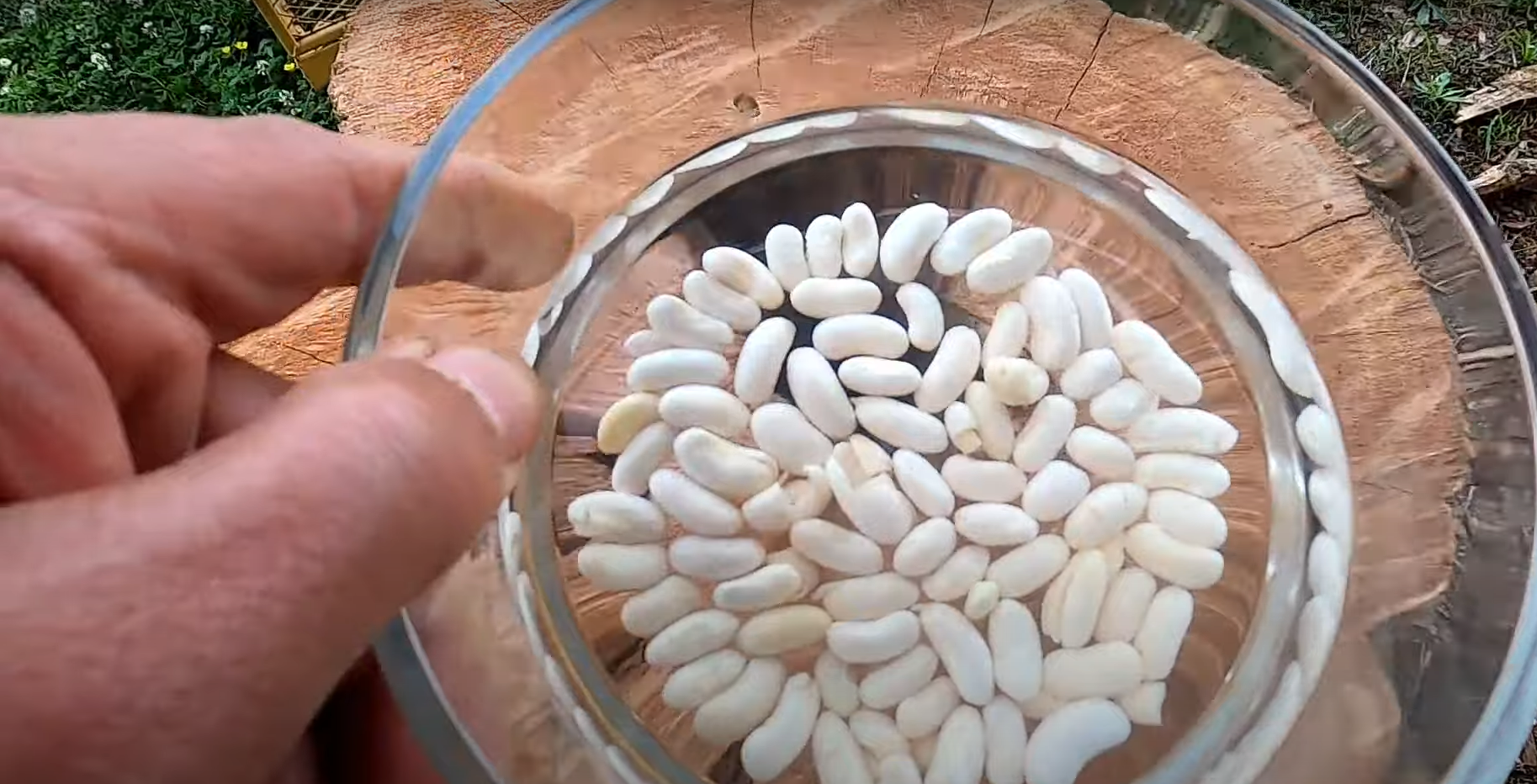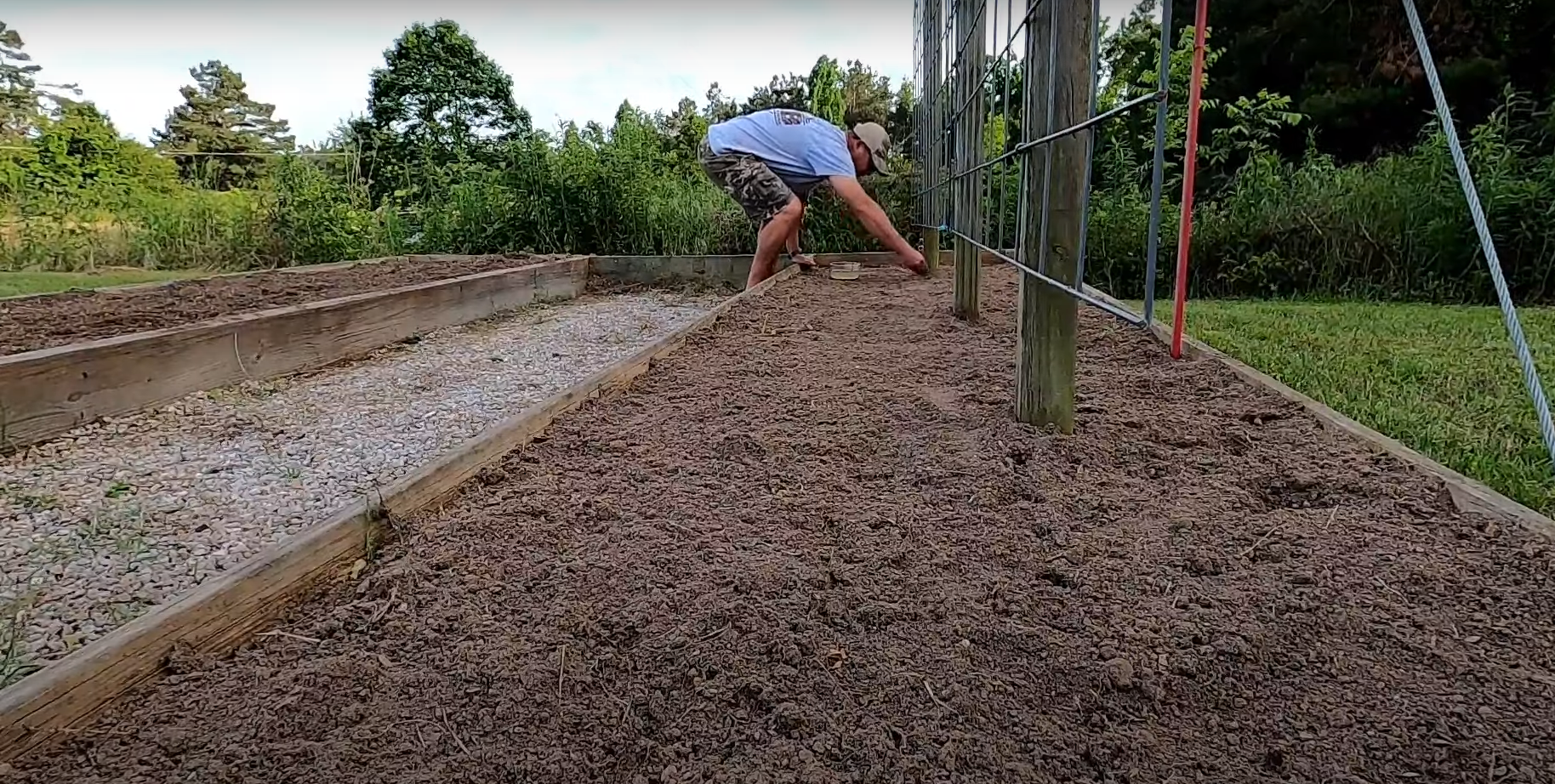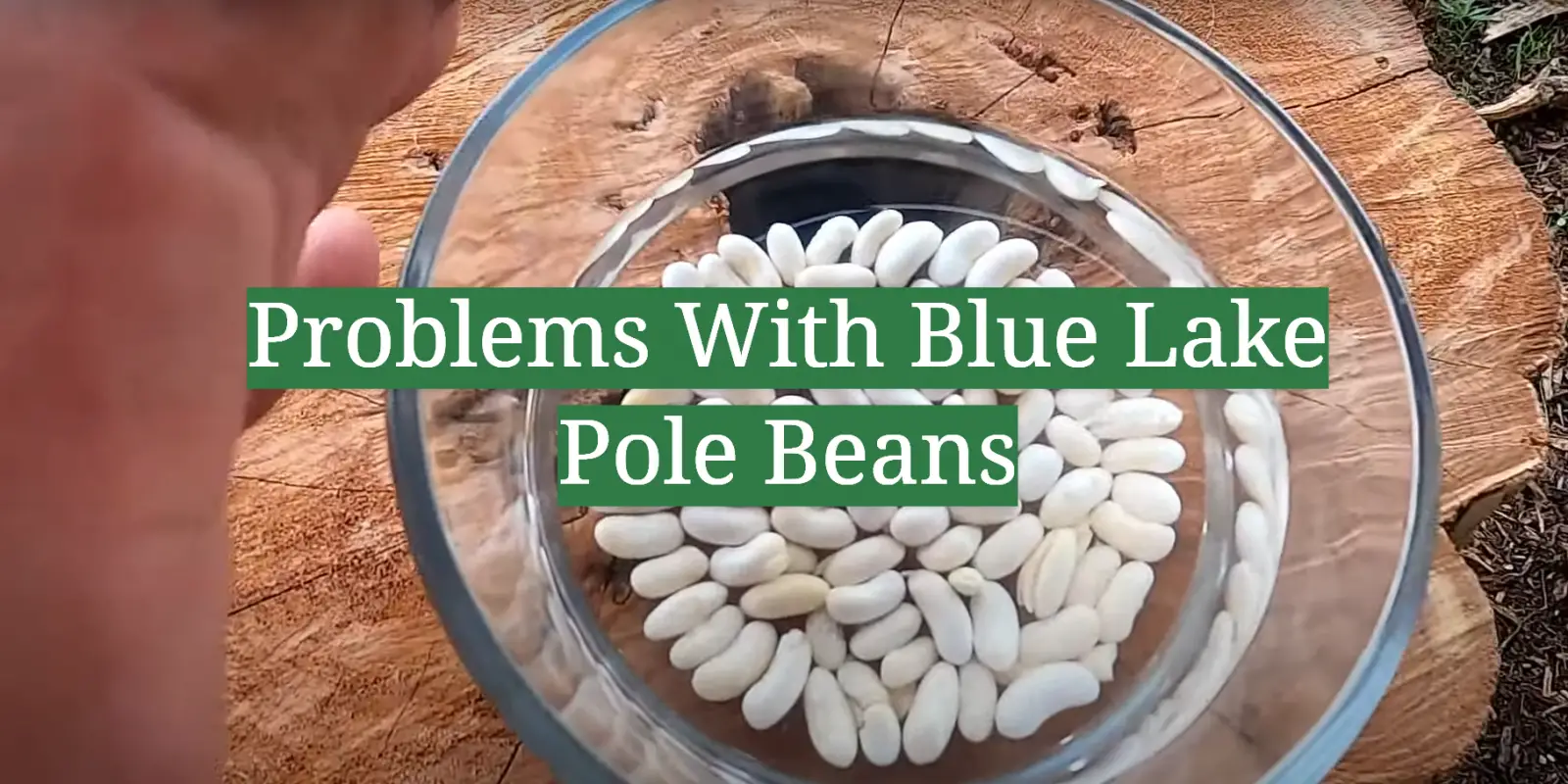If you’ve ever grown pole beans, chances are that you have encountered the Blue Lake variety. This is a popular type of bean among gardeners because it produces an abundance of large pods and are easy to grow in many climates. However, there can be some issues with this particular strain including poor yields, fungal diseases, and bacterial blight. In this blog post, we’ll explore these problems in greater detail so that you can troubleshoot them if they arise while growing your Blue Lake pole beans!
What Are Blue Lake Pole Beans?
Blue Lake Pole Beans are a variety of green beans widely used for cooking. They have been around since the mid-1900s and are generally considered to be one of the best tasting varieties of pole beans. The beans grow in length and are typically harvested when they reach about five inches long. While there are many benefits to eating Blue Lake Pole Beans, there can also be some drawbacks that should be noted before using them. [1]
Problems With Blue Lake Pole Beans
Yellow Leaves
Yellow leaves are a common issue that occurs with Blue Lake pole beans. Yellow leaves can be caused by a lack of nitrogen in the soil or overwatering, which can lead to root rot. To avoid this problem, provide your plants with plenty of nitrogen-rich fertilizer and water them deeply but infrequently.

Shriveled Leaves
Shriveled leaves are another-issue frequently encountered with Blue Lake pole beans. This is often caused by drought or not enough water. To prevent this issue, make sure to keep the soil evenly moist and provide your plants with one inch of water per week.
Malformed Bean Leaves
Another issue with Blue Lake pole beans is malformed bean leaves. This can be caused by too much nitrogen or a fungal disease. To avoid this problem, keep your garden free of weeds and provide the correct amount of fertilizer to the plants. If you notice any signs of a fungal infection, use an appropriate fungicide to treat it quickly.
Green Leaves Are Drying Up
One of the most common problems many gardeners experience with Blue Lake Pole Beans is dry, wilting foliage. This can be caused by a variety of factors such as too much sun exposure, lack of water or nutrients in the soil, or poor drainage. To keep your beans from drying out, it’s crucial to provide them with enough water and fertilizer during their growing season.
Additionally, make sure you choose an area with enough sunlight but not too much; if the leaves become scorched from too much sun during peak hours of the day, the plant will quickly wilt and die.
Irregular Holes in The Leaves
Another common problem with Blue Lake Pole Beans is irregular holes in the leaves. This is usually caused by bean weevils, small insects that feed on the foliage of your plant. If left unchecked, these pests can cause serious damage to your crops. To prevent this from happening, keep a regular eye out for them and take action when necessary. Control measures such as insecticidal sprays or organic products can be used to protect your from bean weevils. [2]
Unusual Leaf Spots
Another potential issue with Blue Lake Pole Beans is the appearance of unusual leaf spots on the foliage which could indicate disease or fungus spreading throughout the plant. To remedy this situation, you should first determine what type of disease or fungus it is and then take appropriate action. Depending on the type of fungus or disease, you may need to treat it with a fungicide or other pesticide to prevent further damage from spreading. Additionally, if your bean plants are overwatered and not given enough sunlight, they are more susceptible to these problems, so be sure to properly care for them as well.
Overall, Blue Lake Pole Beans can be a great addition to any garden, but they require special attention in order to remain healthy and productive. With regular maintenance such as proper watering and fertilization along with protection from pests and diseases, your beans should stay strong and produce delicious crops for years to come!
Causes of Bean Problems in Blue Lake Pole Beans
Blue Lake pole beans are prone to several problems that can diminish their yield and overall quality. Diagnosing the cause of these issues is often difficult, but understanding the potential causes can help gardeners troubleshoot common bean plant problems.
Fungal diseases such as anthracnose and rust can also threaten a bean crop. These diseases thrive in warm, wet conditions and cause lesions on the leaves that can spread to the pods. To prevent these issues from occurring, gardeners should ensure that their plants have adequate air circulation and are not overcrowded or over-watered. If signs of fungal disease appear, fungicides may be necessary to treat the infestation and restore plant health.

Finally, pest infestations can also lead to poor bean yields. Insects like aphids, beetles, mites, and nematodes feed on the leaves and pods of pole beans. In addition to damaging plants directly, pests can transmit viruses among bean varieties which can stunt growth or kill seedlings. To reduce the risk of pest infestation, gardeners should rotate crops, monitor plants for signs of pests, and use organic insecticides to control existing populations.
Overall, Blue Lake pole beans can face several issues that diminish their yield and quality. By understanding the potential causes of these problems—pollination difficulties, fungal diseases, and pests—gardeners can take proactive steps to ensure healthy bean plants. With proper management strategies in place, a successful harvest is more likely to be achieved. [3]
Prevention of Green Beans Problems
Proper care and maintenance of blue lake pole beans can help prevent some common problems. For instance, uneven watering can contribute to issues such as blossom end rot and sunscald in green beans. To ensure consistent moisture levels, water your plants regularly and check the soil for dryness or wetness before irrigating. Mulching around the base of the bean plant is also an effective way to keep the soil moist while discouraging weeds that may compete with beans for resources.
Finally, proper support for your bean plants is essential. Staking or trellising will help to provide better air circulation, discourage dampness around the base of plants, and reduce pest problems such as slugs or snails. Pruning off any yellowed or diseased foliage can also help prevent disease spread throughout your crop. With a little extra care and attention, you can ensure a successful season of blue lake pole beans!

Are Blue Lake Pole Beans Good?
Yes, blue lake pole beans are a great choice for gardeners! They are one of the most popular varieties of green beans due to their flavor and versatility. When properly cared for, these beans can provide a plentiful harvest that is packed with vitamins, minerals, and antioxidants. Plus, they grow quickly and can be eaten either fresh or frozen. With blue lake pole beans in your garden, you’re sure to enjoy an abundant season full of tasty produce!
Are Blue Lake Bush Beans Disease Resistant?
The answer to this question depends on the type of disease you are trying to protect against. Blue Lake Bush Beans are not inherently resistant to any particular diseases, but they do have certain characteristics that may help reduce the risk of certain problems.
For instance, Blue Lake Bush Beans have a thick skin which helps them to resist some kinds of fungal infection. Additionally, their small size and compact growth habit can make it harder for pests such as aphids and mites to damage the plants. [4]
Are Pole Beans Safe To Eat?
Blue Lake Pole Beans may be safe to eat, however, there are potential problems that you should be aware of. These pole beans have been known to contain high levels of nitrates and oxalates. High intakes of these compounds can lead to health issues such as nausea, vomiting, diarrhea and headaches. Additionally, the plant can also become infested with harmful insects or parasites which could cause health problems if consumed. Therefore, it is important to ensure that the beans are properly cooked before eating them and stored in a cool dry place for best results.
By following these safety precautions, you can ensure that your Blue Lake Pole Beans are safe and enjoyable to eat. [5]
Do Blue Lake Beans Need Fertilizer?
Blue Lake pole beans typically benefit from regular fertilizing, especially when grown in poor soil or after they have produced for a few years. Ammonium sulfate is the preferred fertilizer option as it provides more nitrogen than other materials. Fertilize at planting and then every 4-6 weeks throughout the growing season, using 1 tablespoon per 10 feet of row. Too much nitrogen can cause lush foliage but reduced yields, so be sure to follow the directions on your fertilizer package to avoid overfeeding your plants.
Blue Lake pole beans usually don’t require additional fertilizer after they have been established, but adding a few cups of compost or aged manure once a year will help to maintain fertility levels in the soil. Overall, with proper fertilizing and regular watering, Blue Lake pole beans should be able to thrive and produce abundant yields for many growing seasons. [6]
FAQ
What are the common problems of string beans?
String beans are susceptible to a variety of diseases and pests. Common issues include bacterial wilt, mosaic virus, fusarium wilt, rust fungus, anthracnose, bean leaf beetle damage and spider mites.
How do I know if my Blue Lake Pole Beans are affected?
If you notice wilting or discoloration on the leaves and pods of your Blue Lake Pole Beans plants, this is an indication that disease or pest may be affecting your plants. Additionally, if there is evidence of holes in the bean pods or leaves with yellow spots or rings around them then it could be a sign of an infestation by the bean leaf beetle.
What can I do to prevent problems with my Blue Lake Pole Beans?
To prevent problems with your Blue Lake Pole Beans, it is important to practice good crop rotation and sanitation in the garden. Avoid planting near areas where other susceptible crops have been grown recently, as this can increase the risk of disease or pest infestation. Additionally, keep an eye out for insect pests and signs of disease on your beans and act quickly if you spot any issues. If possible, try using non-chemical methods like companion planting of aromatic herbs to promote beneficial insects instead of relying on pesticides. Finally, make sure to water your plants consistently during dry spells and use mulch around the base of the plant to help retain moisture.
What should I do if my Blue Lake Pole Beans are affected?
If your Blue Lake Pole Beans plants are affected by disease or pests, it is important to act quickly. If the problem is caused by a disease, you can try treating your plants with a fungicide or other chemical treatment. For an insect infestation, you may need to use pesticides to control the pests. It’s also important to remove and destroy any affected plant parts as soon as possible to help stop the spread. Finally, make sure that you practice good crop rotation and sanitation in your garden in order to reduce the risk of recurrence of diseases or pest infestations.
Can I still harvest my Blue Lake Pole Beans if they are affected?
If your Blue Lake Pole Beans have been affected by disease or pests it is not recommended that you harvest the beans. This is because the disease or pest could spread to other parts of your garden, as well as potentially making the beans unsafe to consume. It is best to dispose of any affected plant material and start again with new plants.
What should I look out for when planting Blue Lake Pole Beans?
When planting Blue Lake Pole Beans it’s important that you choose a location with plenty of sun and good drainage. Additionally, make sure that there is at least two feet of space between each seed so that the plants can have room to grow and mature. Finally, check nearby areas for signs of pests or diseases before planting as this will help reduce the risk of problems occurring in your crop.
Are Blue Lake bush beans disease resistant?
Blue Lake pole beans are not considered to be disease resistant. The plants can be subject to bacterial and fungal diseases, such as seed rot, root rot, and leaf spot. Additionally, aphids and other pests may attack the plants. To avoid disease problems with Blue Lake bush bean plants, gardeners should practice good crop rotation techniques and use fungicides or pesticides when necessary. Crop rotation helps reduce pest infestations by preventing insects from developing a resistance to certain chemicals used on the same type of plant in successive years.
Are Blue Lake bush beans good?
Blue Lake bush beans are a popular variety of bean that is often used for canning and freezing. They are known for their stringless, tender pods that are easy to harvest and have a pleasant flavor when cooked. Blue Lake bush beans are ideal for home gardens due to their short growing season and compact size. These beans also provide an abundant harvest in a relatively small space. Despite these advantages, Blue Lake bush beans may not be the best choice for gardeners with limited time or resources since they require regular maintenance to produce good yields. Additionally, the plants may be prone to disease if not properly cared for.
Useful Video: Planting Blue Lake Pole Beans || Stringless FM1K
Conclusion
In conclusion, Blue Lake Pole Beans can present several problems for gardeners, including issues with germination, susceptibility to pests and diseases, and difficulty in harvesting. To ensure a successful harvest season when planting Blue Lake Pole Beans, it is important to choose the right variety for your particular growing conditions, take preventative measures against pests and diseases, and be mindful of the challenges associated with harvesting these beans. With proper care, however, Blue Lake Pole Beans are a great addition to any vegetable garden that provide an abundant harvest of healthy vegetables.
References:
- https://gardenguider.com/problems-with-blue-lake-pole-beans/
- https://www.oregonlive.com/hg/2012/08/reader_reports_problems_with_b.html
- https://gardeningaid.com/problems-with-blue-lake-pole-beans/
- https://harvesttotable.com/bean_growing_problems_troubles/
- https://www.gardeningknowhow.com/edible/vegetables/beans/blue-lake-beans.htm
- https://www.smartgardener.com/plants/34-bean-blue-lake-pole/diseases/559-bean-mosaic-virus-bcmv












Leave a Reply
View Comments